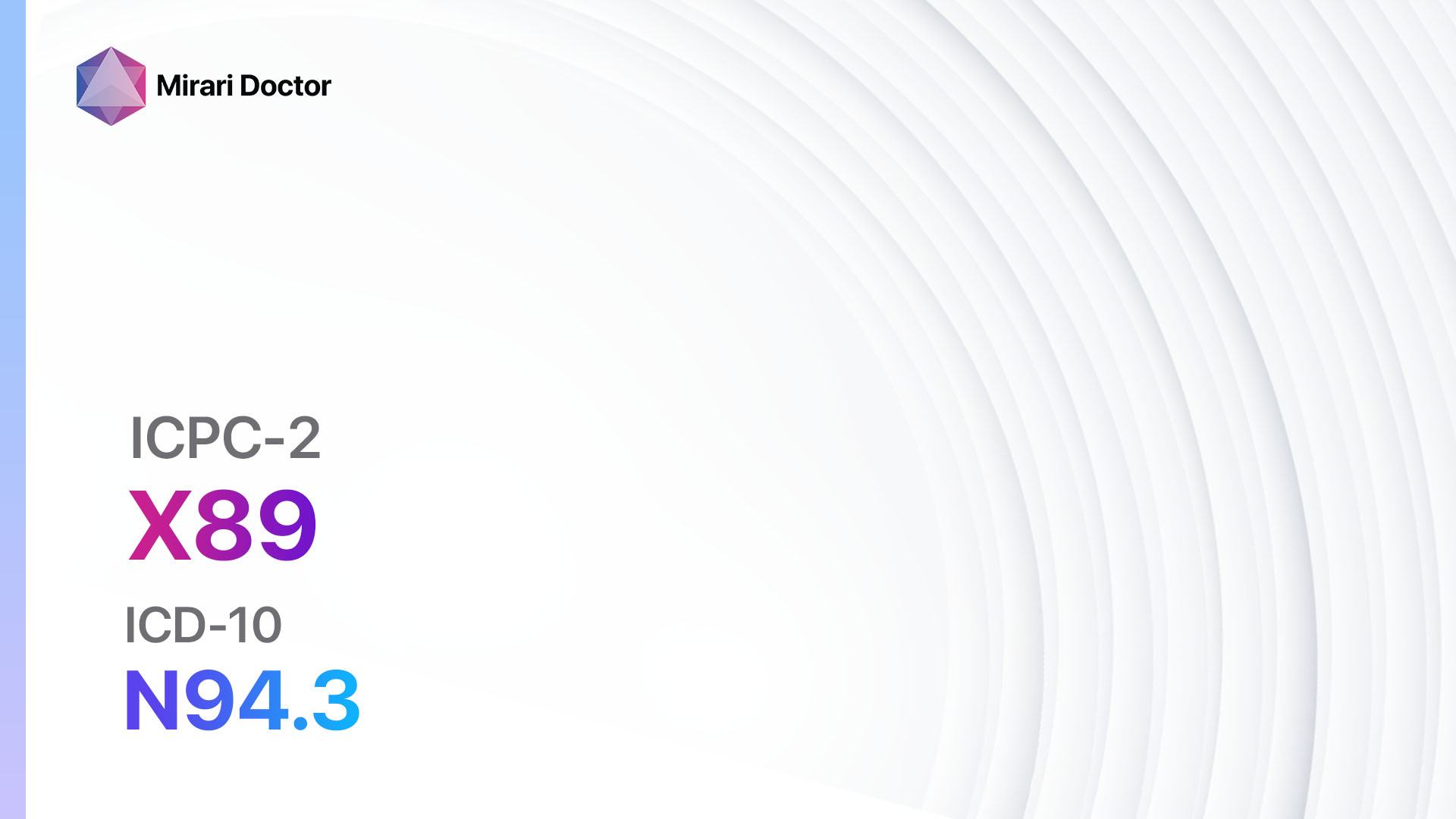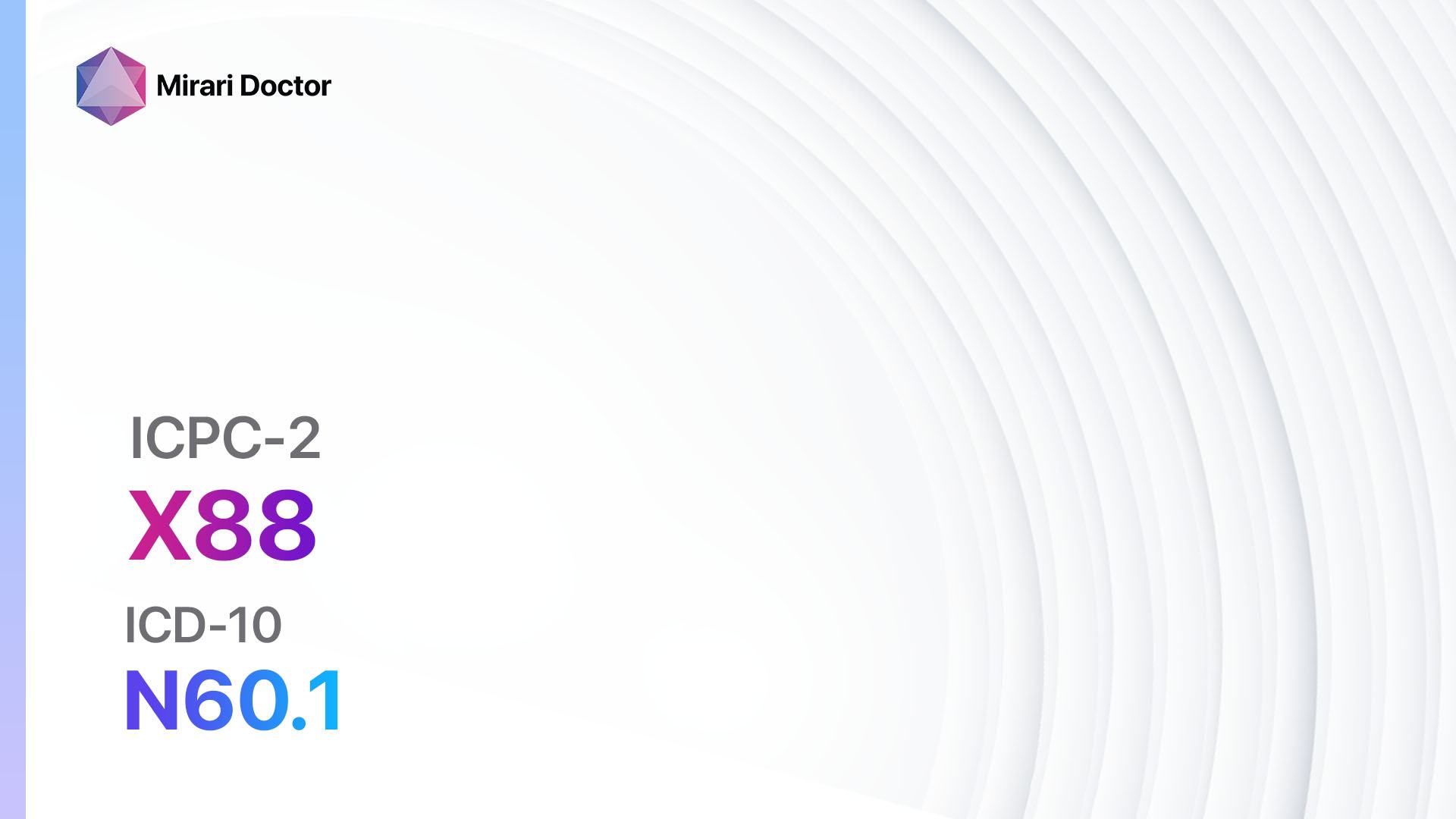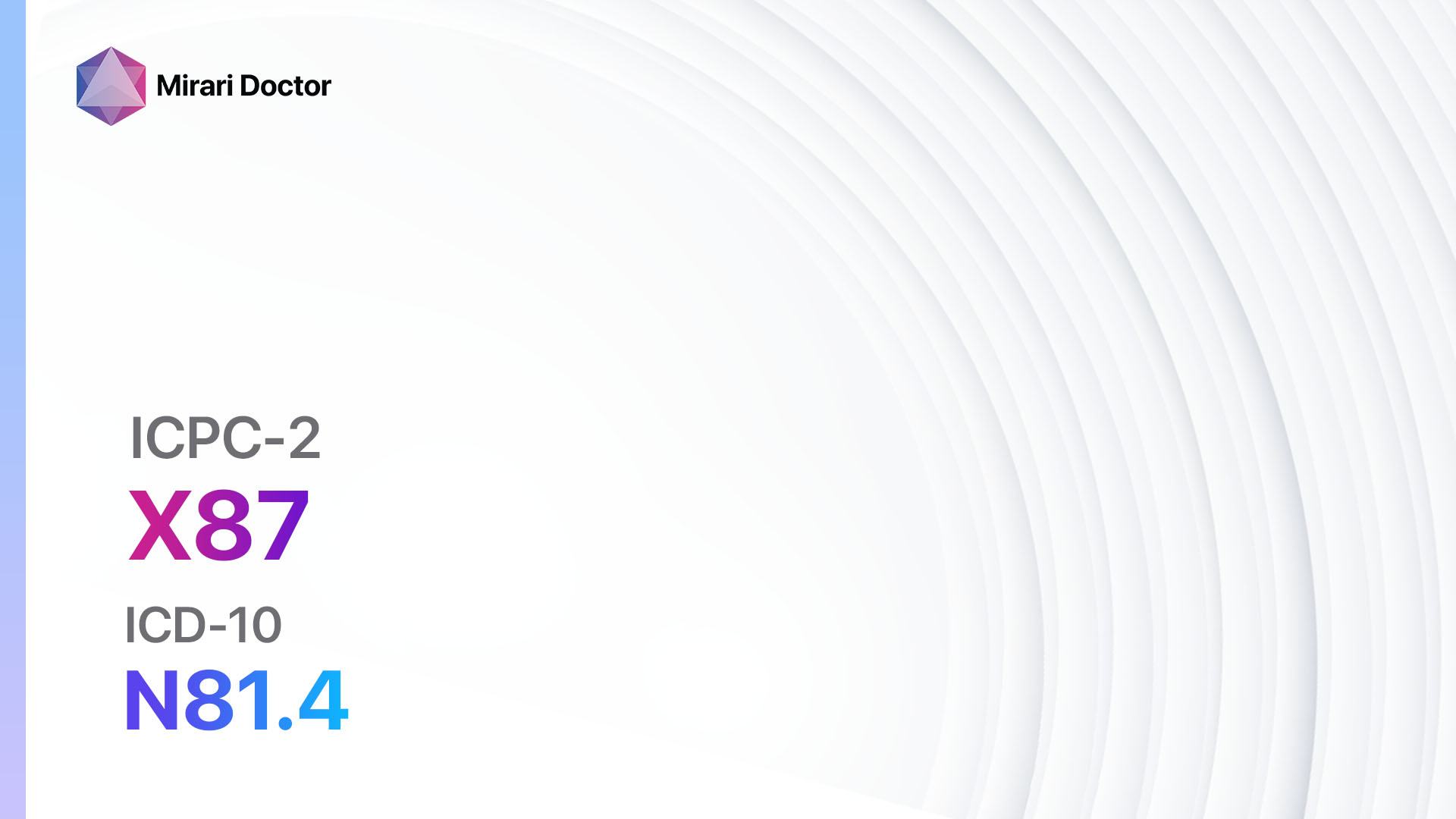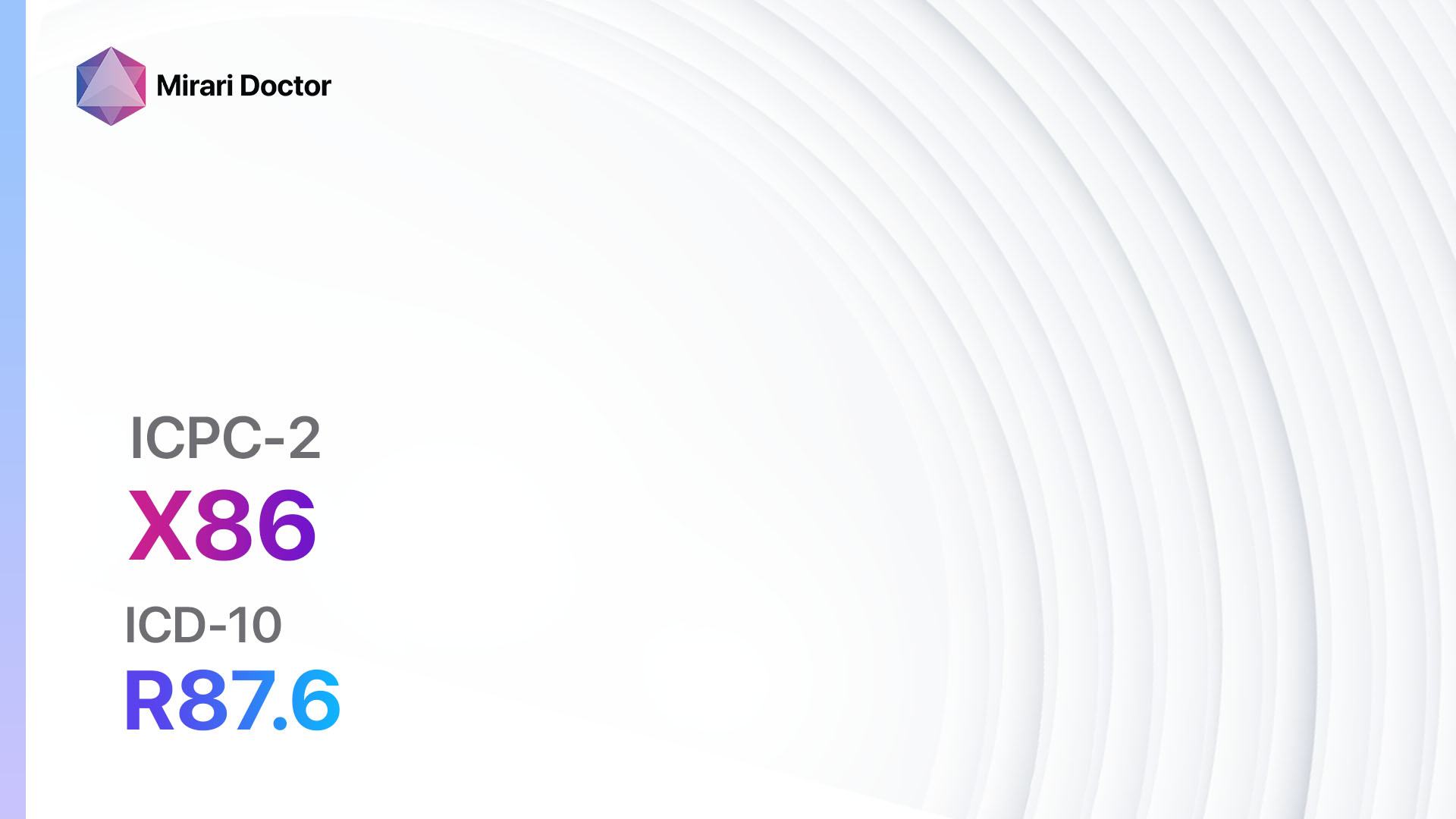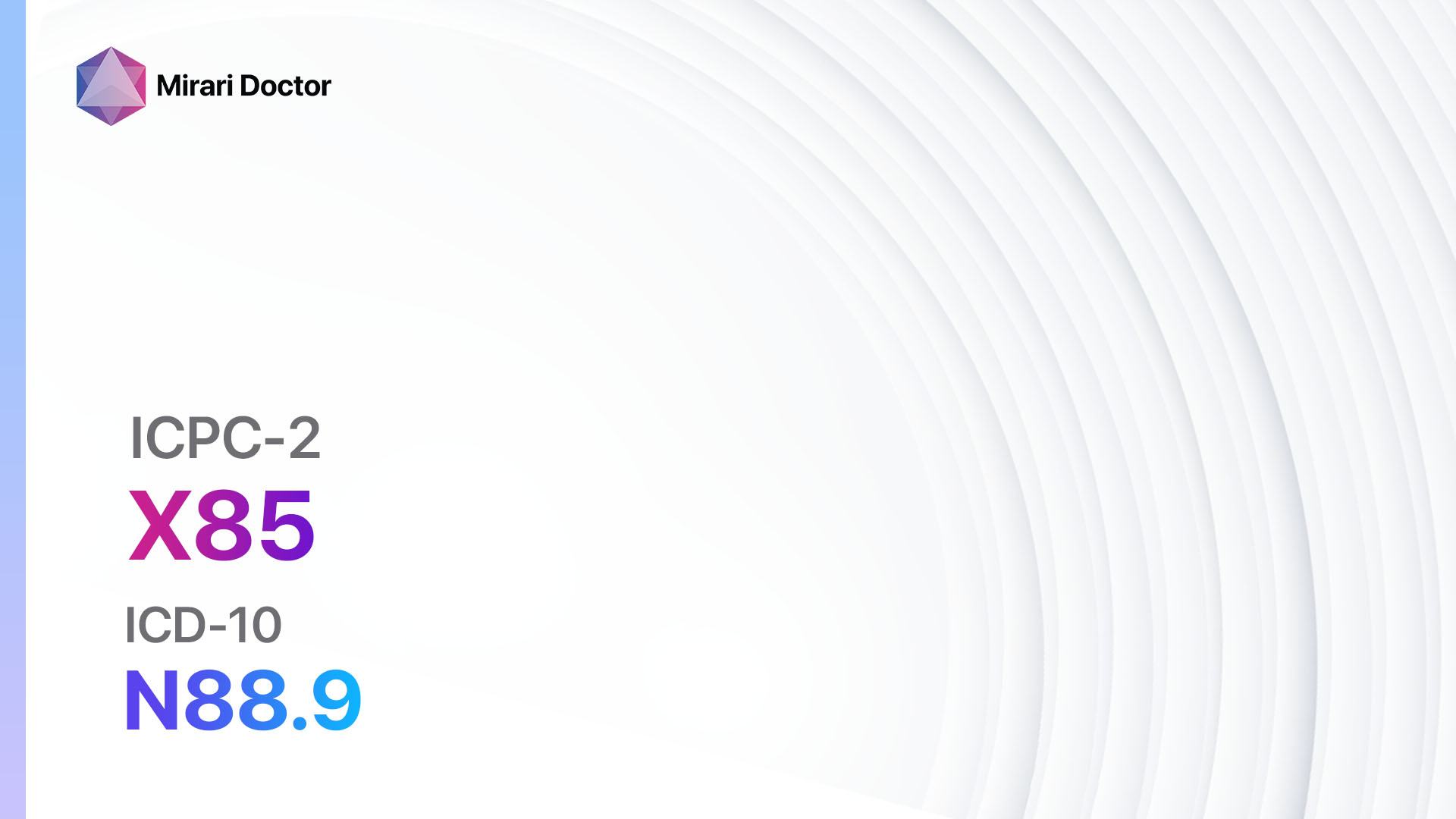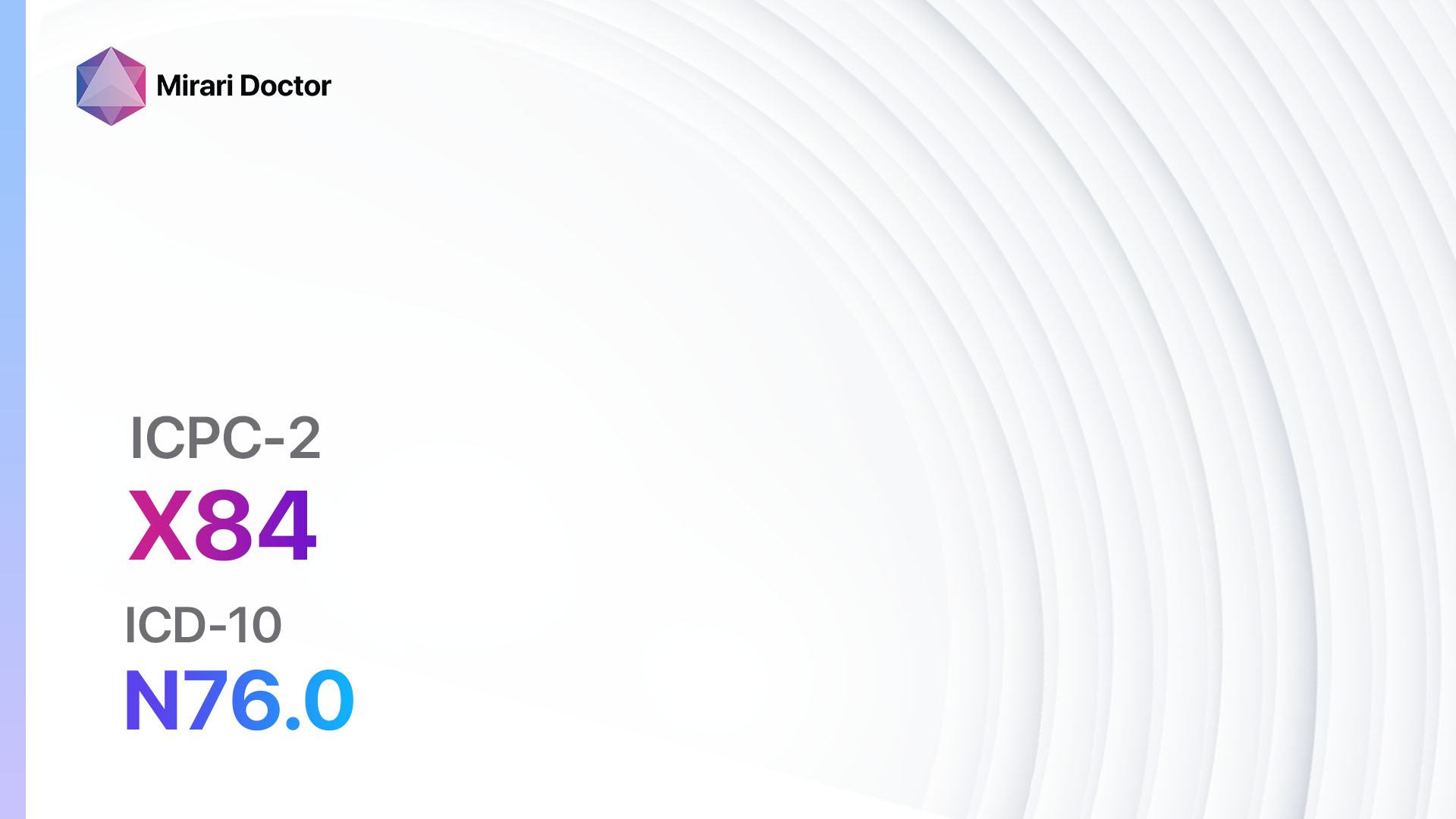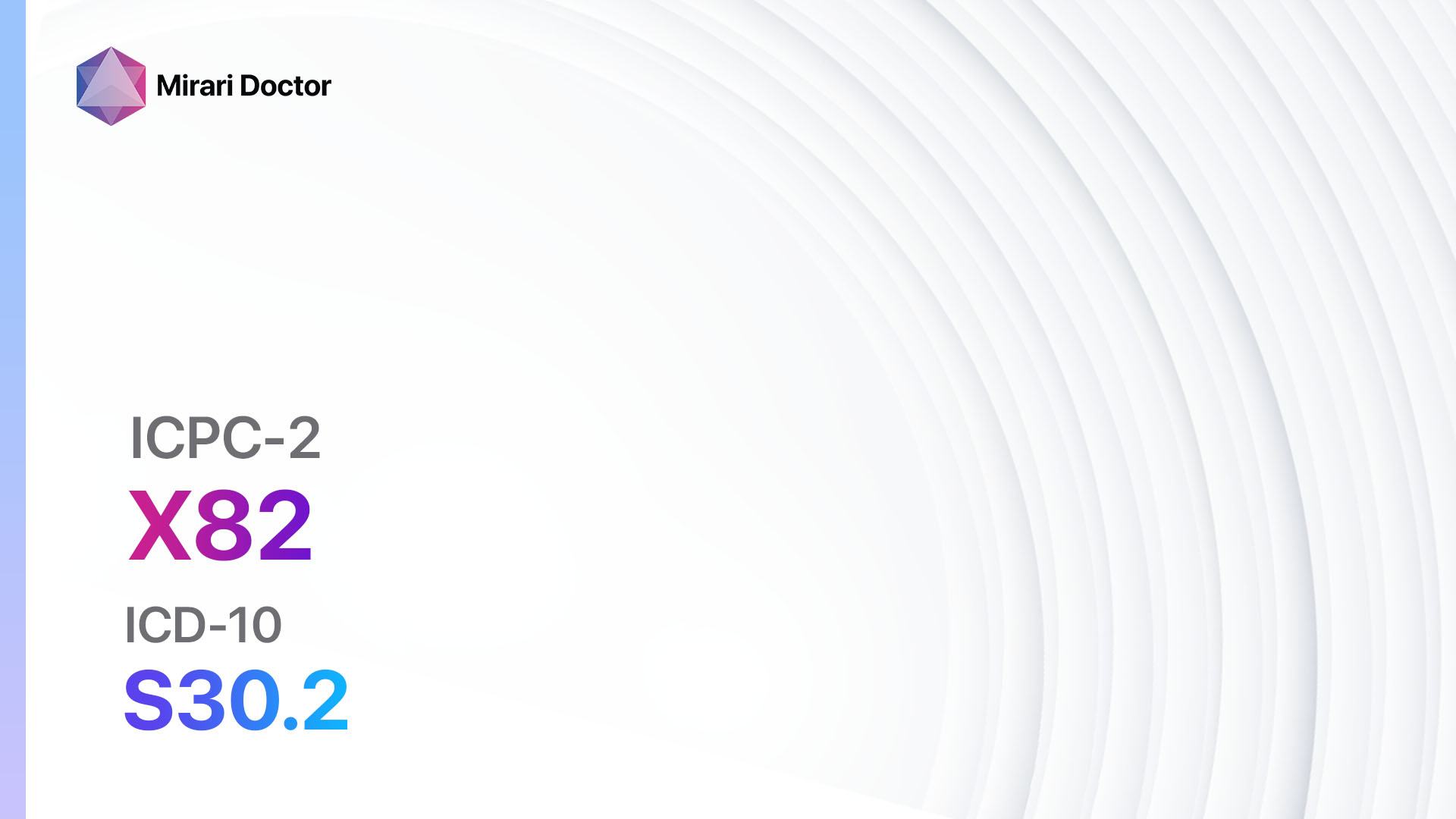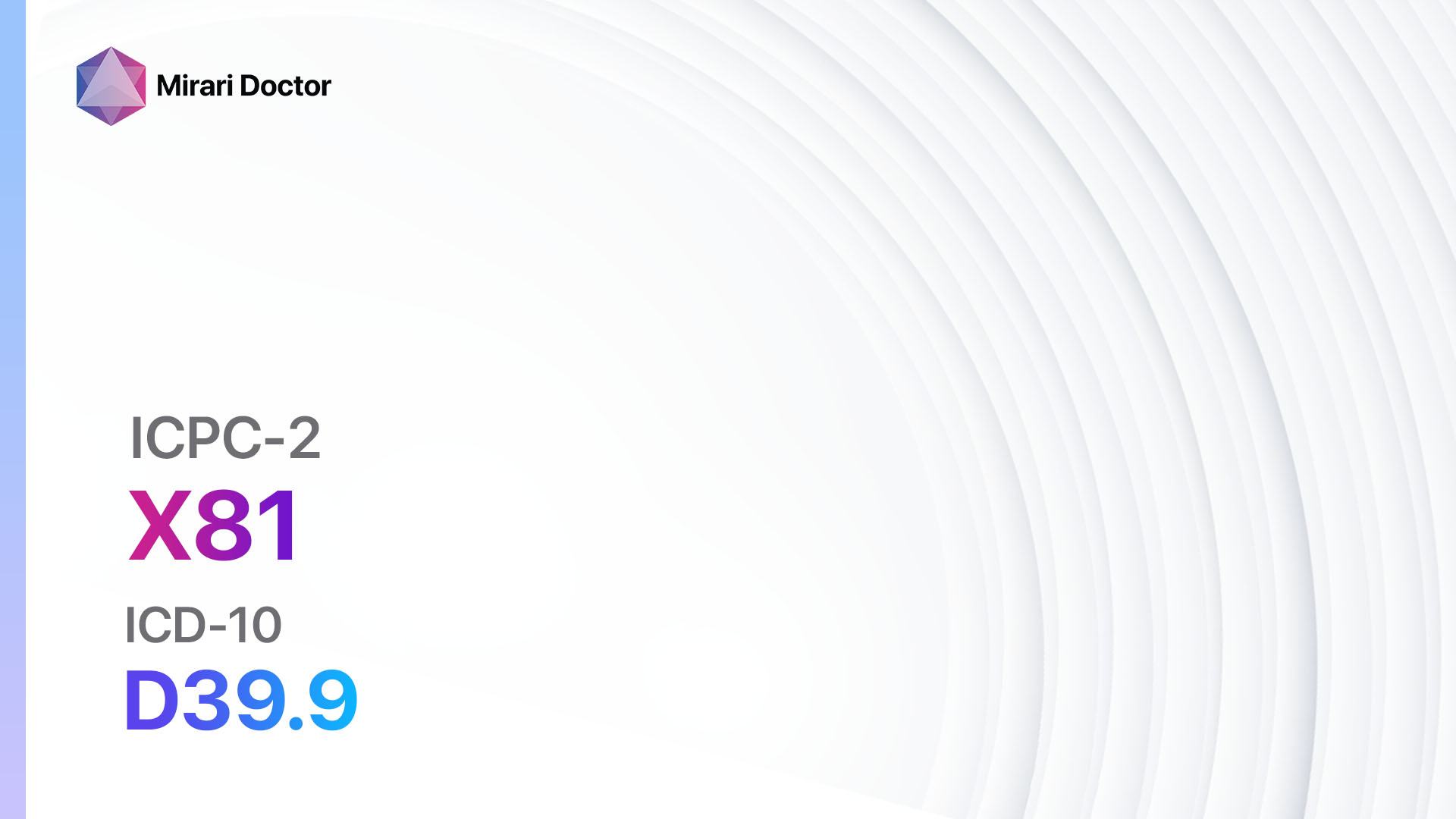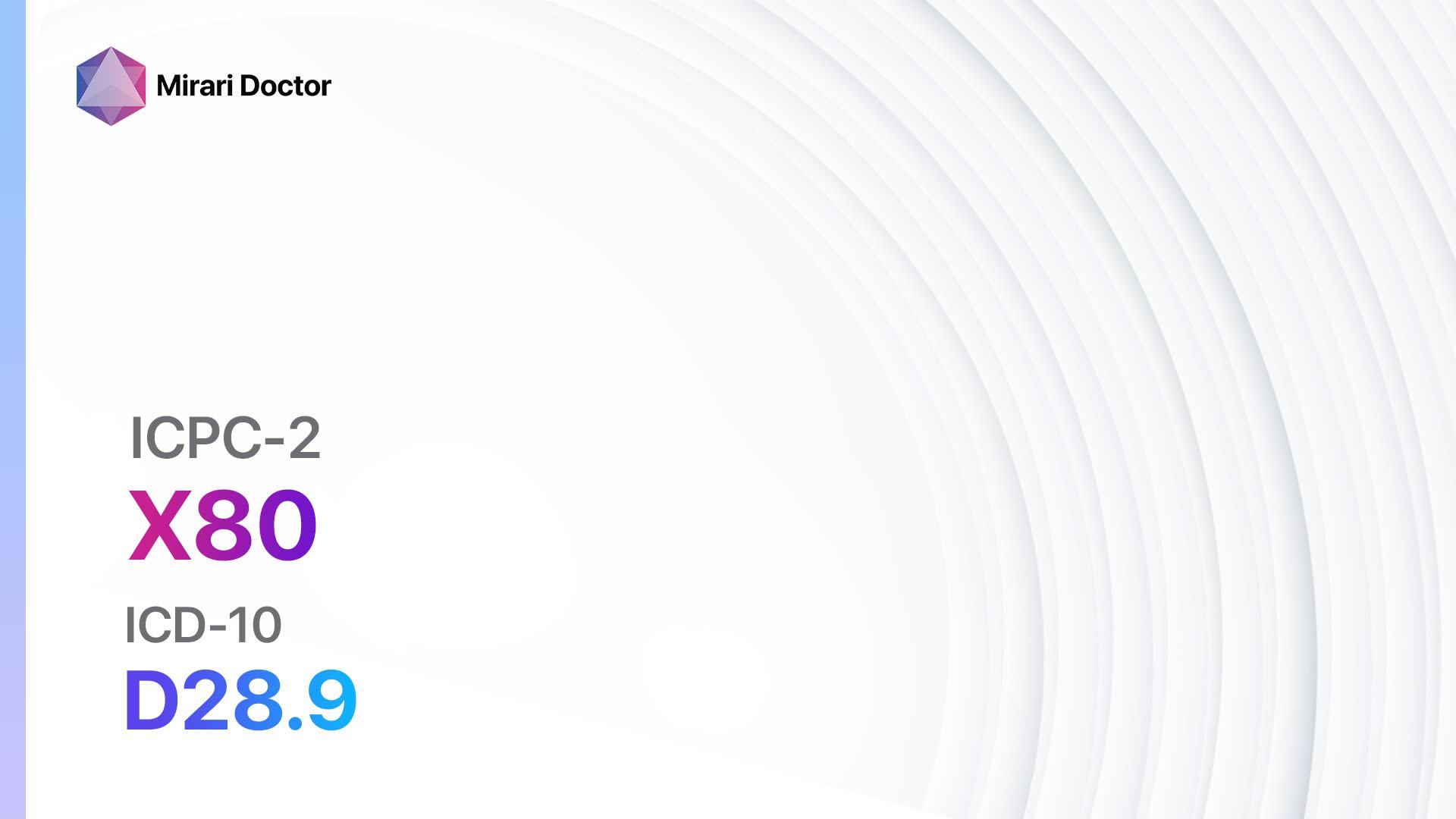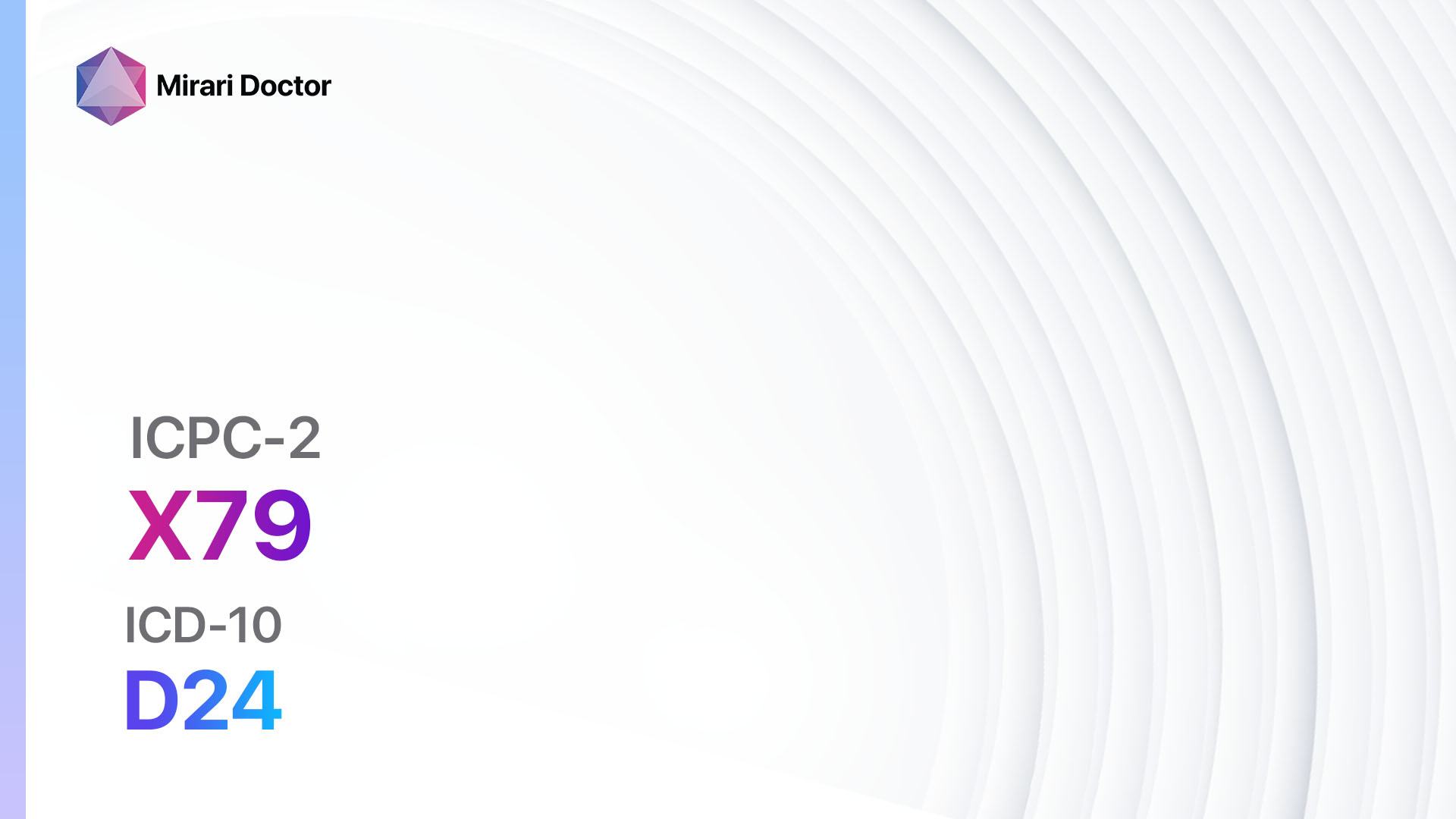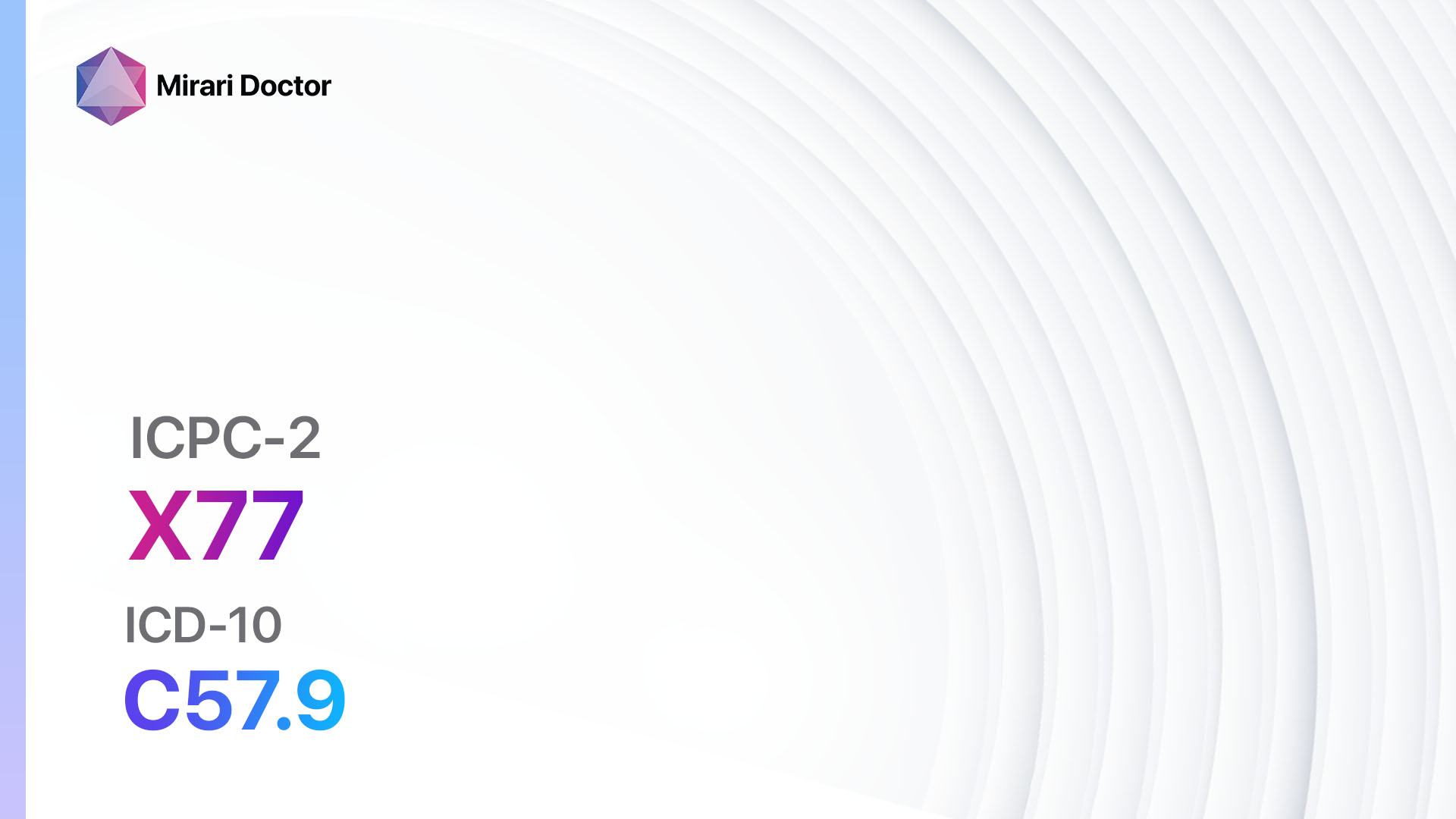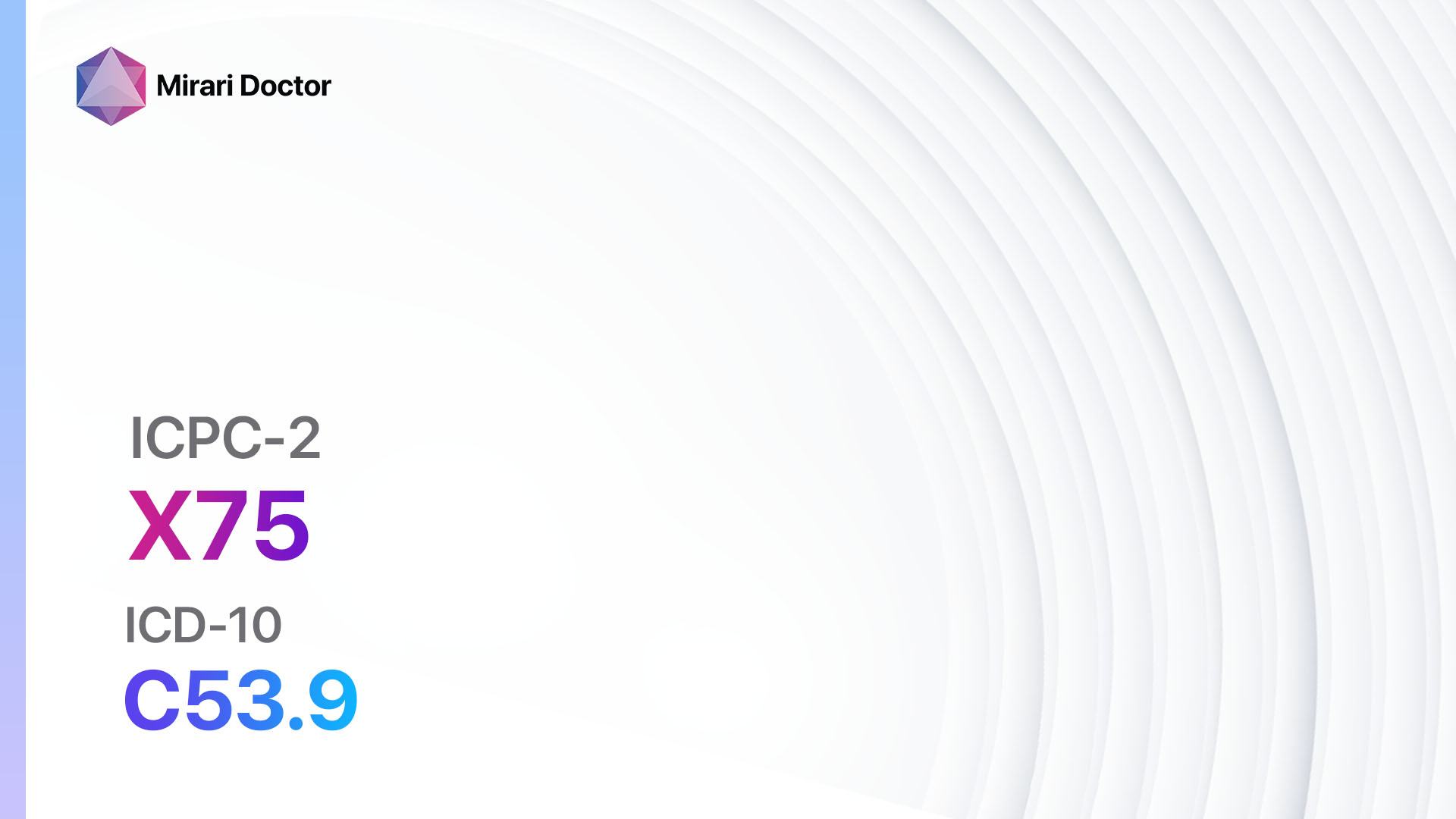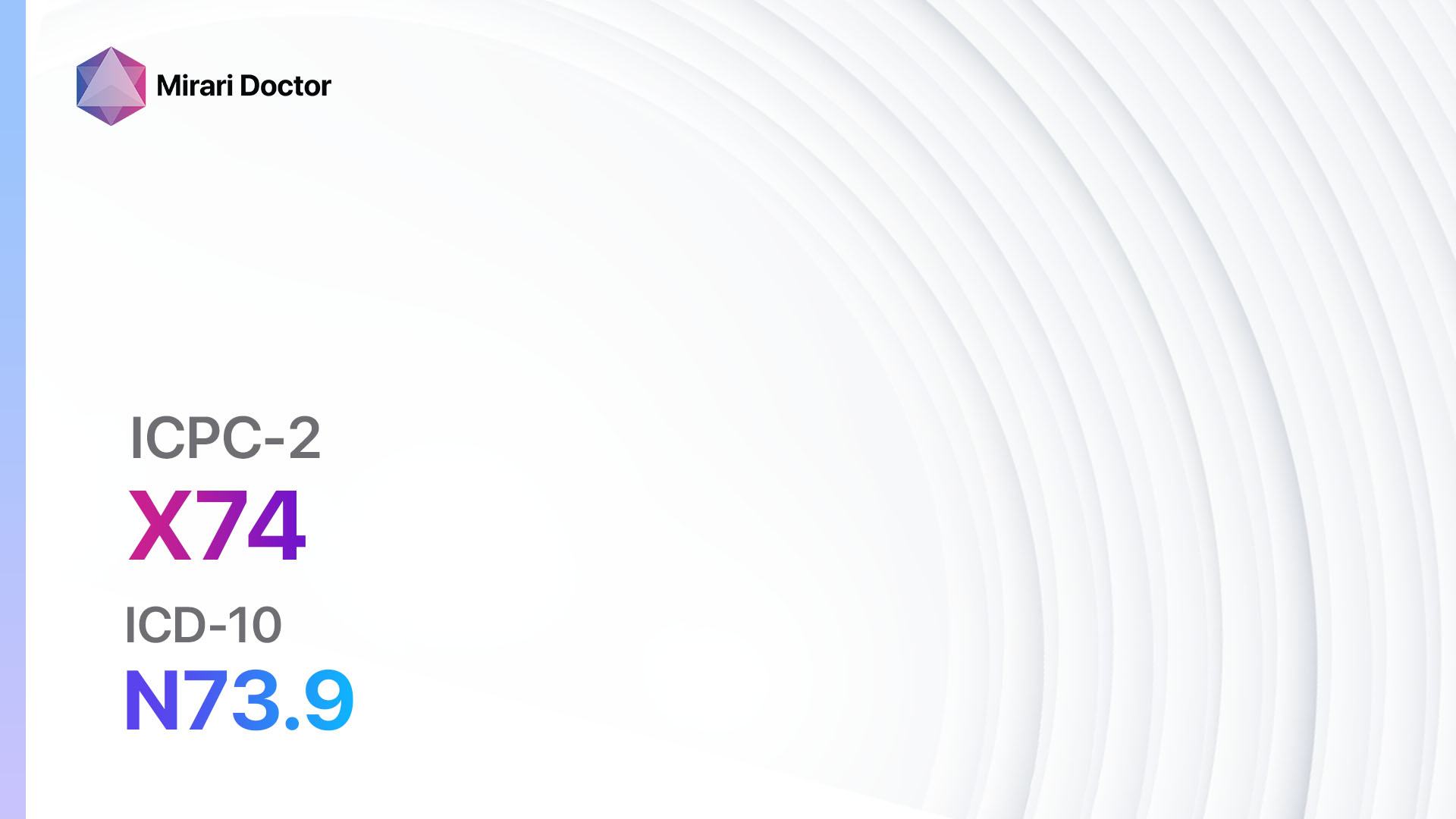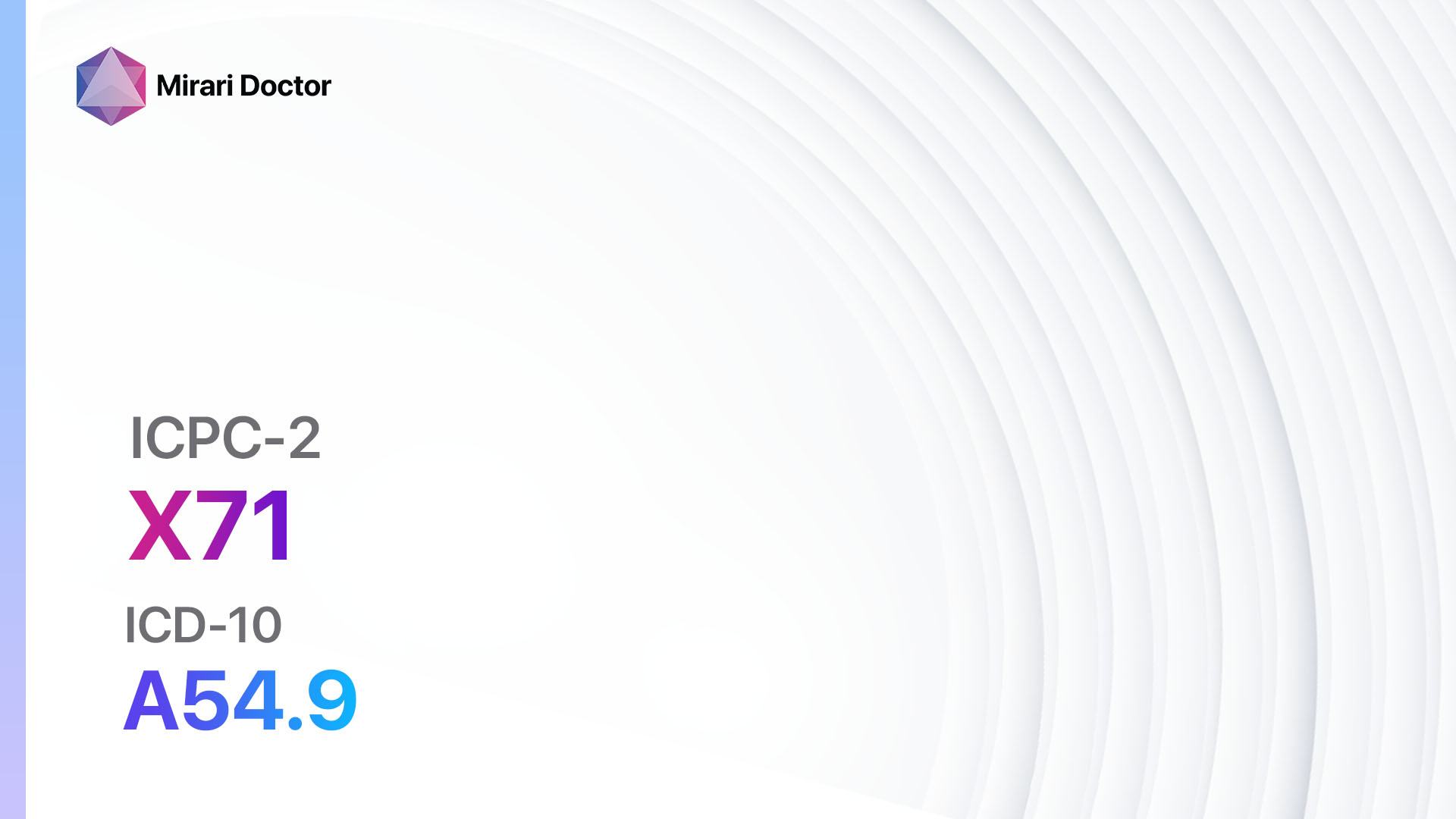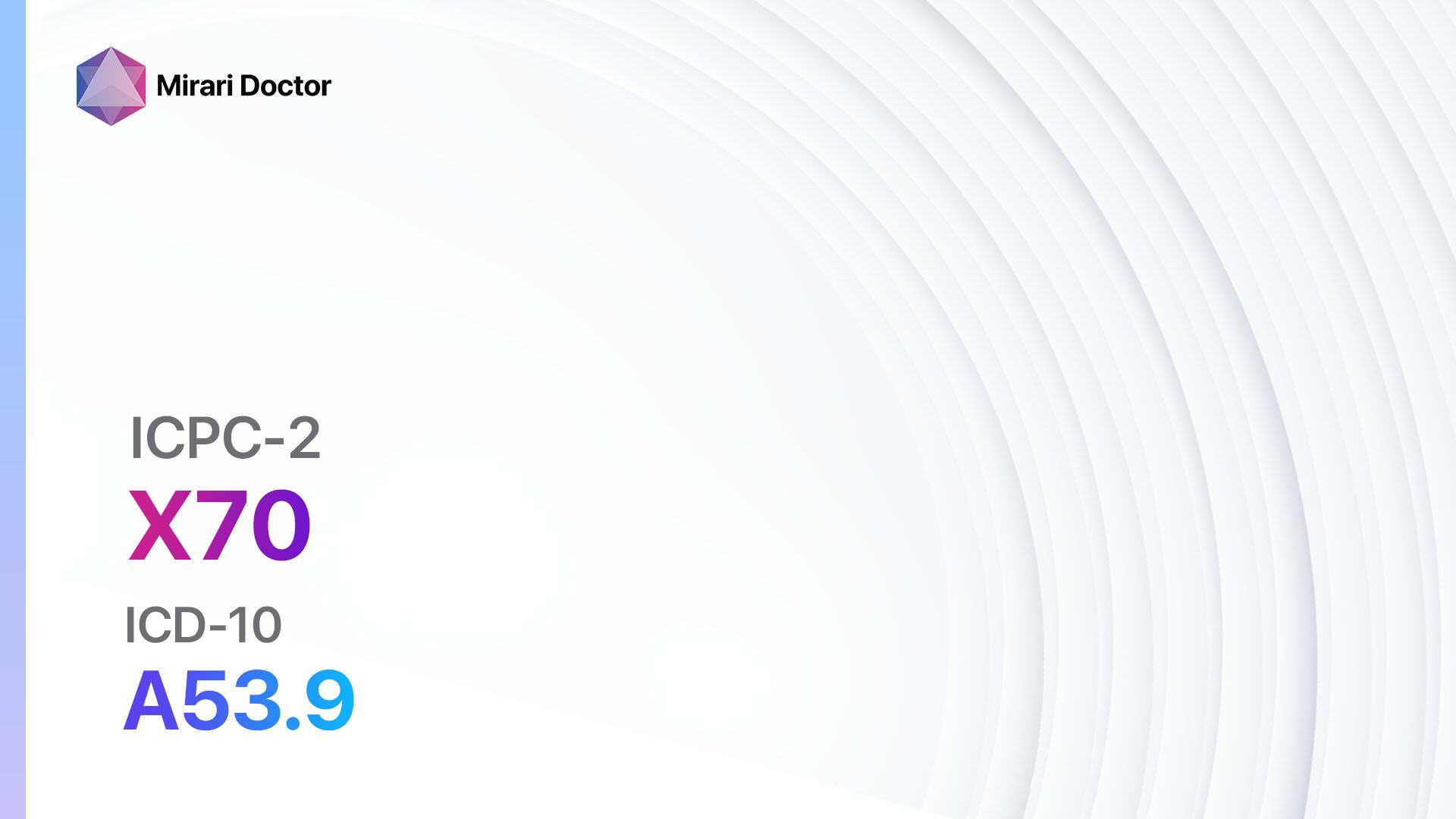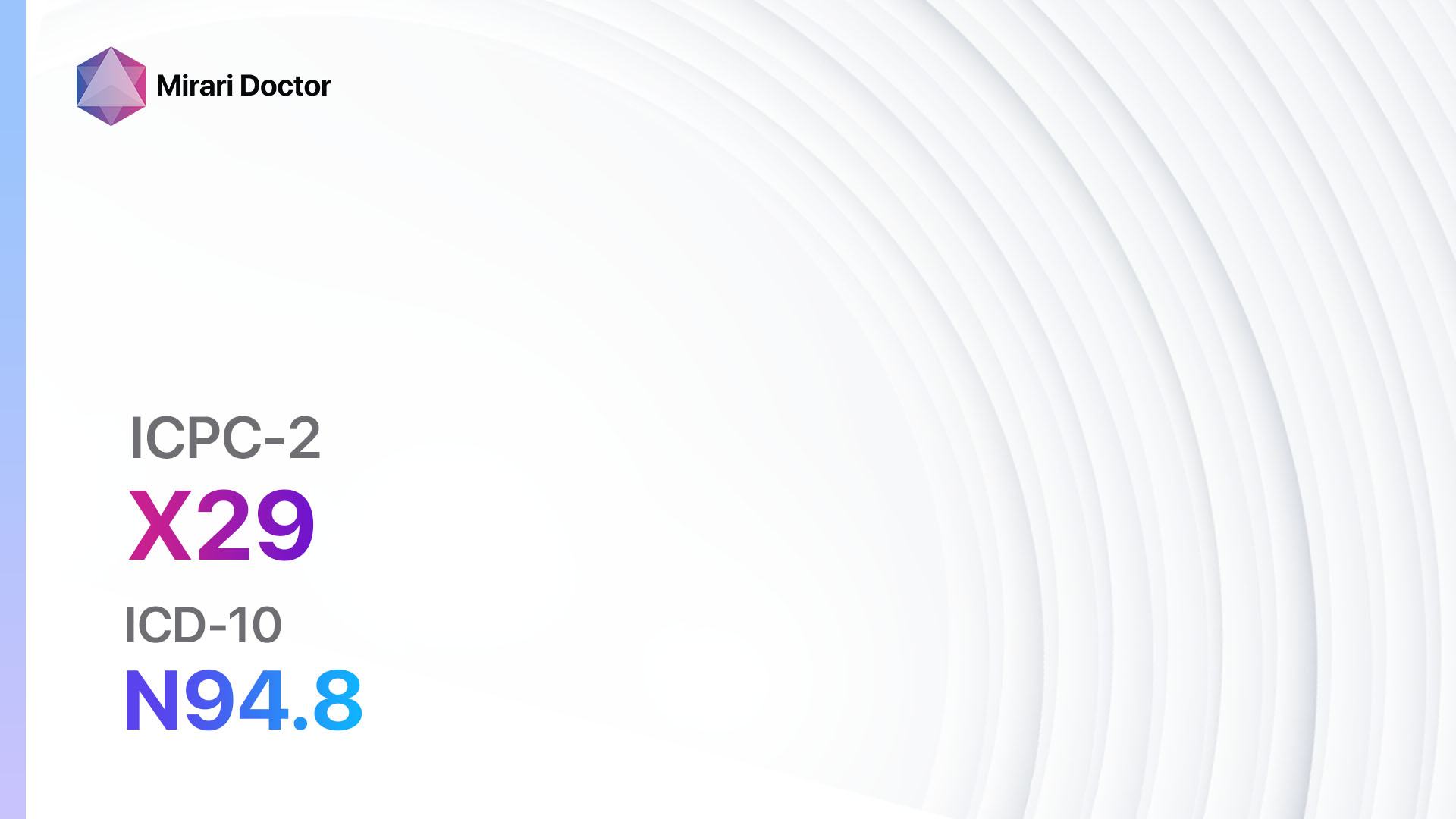
Introduction
Malignant neoplasm of the breast is a type of cancer that develops in the breast tissue. It is the most common cancer among women worldwide and is a significant health concern[1]. The aim of this guide is to provide healthcare professionals with a comprehensive clinical procedural guide for the diagnosis and management of malignant neoplasm breast female.
Codes
- ICPC-2 Code: X76 Malignant neoplasm breast female[2]
- ICD-10 Code: C50.9 Malignant neoplasm of breast of unspecified site[3]
Symptoms
- Lump or thickening in the breast or underarm area
- Changes in breast size or shape
- Dimpling or puckering of the skin
- Nipple retraction or inversion
- Redness or scaling of the nipple or breast skin
- Nipple discharge other than breast milk
- Swollen lymph nodes in the armpit[4]
Causes
The exact cause of malignant neoplasm breast female is unknown, but several risk factors have been identified:
- Age: The risk increases with age, especially after menopause.
- Gender: Being female is the primary risk factor for breast cancer.
- Family history: Having a close relative with breast cancer increases the risk.
- Genetic mutations: Inherited gene mutations, such as BRCA1 and BRCA2, increase the risk.
- Hormonal factors: Early menstruation, late menopause, and hormone replacement therapy can increase the risk.
- Reproductive history: Women who have never been pregnant or had their first child after the age of 30 have a higher risk.
- Radiation exposure: Previous radiation therapy to the chest area increases the risk.
- Obesity: Being overweight or obese increases the risk, especially after menopause.
- Alcohol consumption: Regular and excessive alcohol consumption increases the risk.[5][6]
Diagnostic Steps
Medical History
- Gather information about the patient’s risk factors, such as age, gender, family history, and reproductive history.
- Assess the patient’s symptoms and their duration.
- Inquire about any previous breast conditions or surgeries.
- Evaluate the patient’s overall health and medical conditions that may affect treatment options.[7]
Physical Examination
- Perform a thorough breast examination, including both breasts and the surrounding lymph nodes.
- Look for any lumps, changes in breast size or shape, skin changes, nipple abnormalities, or discharge.
- Palpate the breasts to identify any masses or areas of tenderness.
- Examine the axillary lymph nodes for swelling or tenderness[8].
Laboratory Tests
- Breast cancer antigen 15-3 (CA 15-3) blood test: Elevated levels may indicate the presence of breast cancer, but it is not a definitive diagnostic test.
- Complete blood count (CBC): To assess overall health and detect any abnormalities.
- Liver function tests: To evaluate liver function, as breast cancer can spread to the liver[9].
Diagnostic Imaging
- Mammography: The primary imaging modality for breast cancer screening and diagnosis. It can detect abnormalities, such as masses or microcalcifications.
- Ultrasound: Used to further evaluate suspicious findings on mammography or to differentiate between solid masses and fluid-filled cysts.
- Magnetic resonance imaging (MRI): Used in specific cases, such as high-risk patients or to evaluate the extent of disease.
- Breast biopsy: The definitive diagnostic procedure, which involves removing a sample of breast tissue for examination under a microscope.[10]
Follow-up and Patient Education
- Provide the patient with a clear explanation of the diagnosis and treatment plan.
- Discuss the importance of regular follow-up appointments and screenings.
- Educate the patient about self-breast examination and the signs of recurrence or metastasis.
- Offer emotional support and provide resources for counseling or support groups.
Possible Interventions
Traditional Interventions
Medications:
Top 5 drugs for Malignant neoplasm breast female:
- Tamoxifen:
- Cost: $50-$100/month.
- Contraindications: History of blood clots, pregnancy.
- Side effects: Hot flashes, vaginal dryness, increased risk of endometrial cancer.
- Severe side effects: Blood clots, stroke, uterine cancer.
- Drug interactions: Anticoagulants, selective serotonin reuptake inhibitors (SSRIs).
- Warning: Regular monitoring of liver function and blood clotting parameters required.
- Aromatase inhibitors (e.g., Anastrozole, Letrozole):
- Cost: $100-$300/month.
- Contraindications: Pregnancy, premenopausal women.
- Side effects: Joint pain, hot flashes, osteoporosis.
- Severe side effects: Osteoporotic fractures, cardiovascular events.
- Drug interactions: Estrogen-containing medications.
- Warning: Regular monitoring of bone density and lipid profile required.
- Chemotherapy agents (e.g., Doxorubicin, Cyclophosphamide):
- Cost: Varies depending on the specific drugs used.
- Contraindications: Severe heart disease, active infections.
- Side effects: Hair loss, nausea, fatigue.
- Severe side effects: Bone marrow suppression, heart damage.
- Drug interactions: Many potential drug interactions.
- Warning: Regular monitoring of blood counts and cardiac function required.
- Trastuzumab:
- Cost: $1,000-$3,000/month.
- Contraindications: Severe heart disease, pregnancy.
- Side effects: Infusion reactions, fatigue, diarrhea.
- Severe side effects: Cardiotoxicity, lung problems.
- Drug interactions: None reported.
- Warning: Regular monitoring of cardiac function required.
- Bisphosphonates (e.g., Zoledronic acid):
- Cost: $100-$500/month.
- Contraindications: Severe kidney disease, hypocalcemia.
- Side effects: Flu-like symptoms, bone pain.
- Severe side effects: Osteonecrosis of the jaw, kidney problems.
- Drug interactions: None reported.
- Warning: Regular monitoring of renal function and calcium levels required.
Alternative Drugs:
- Targeted therapy (e.g., Lapatinib, Everolimus): Used in specific cases, targeting specific genetic mutations or pathways.
- Immunotherapy (e.g., Pembrolizumab): Used in specific cases, stimulating the immune system to fight cancer cells.
- Pain medications (e.g., Acetaminophen, Nonsteroidal anti-inflammatory drugs): Used to manage pain associated with cancer or its treatment.
Surgical Procedures:
- Breast-conserving surgery (lumpectomy): Removal of the tumor and a small margin of surrounding healthy tissue. Cost: $10,000-$20,000.
- Mastectomy: Removal of the entire breast tissue. Cost: $15,000-$30,000.
- Sentinel lymph node biopsy: Removal and examination of the first few lymph nodes to determine if cancer has spread. Cost: $5,000-$10,000.
- Axillary lymph node dissection: Removal of multiple lymph nodes in the armpit. Cost: $10,000-$20,000.
- Breast reconstruction: Restoring the shape and appearance of the breast after mastectomy. Cost: $10,000-$20,000.
Alternative Interventions
- Acupuncture: May help manage treatment-related side effects, such as nausea and pain. Cost: $60-$120 per session.
- Mind-body techniques (e.g., Meditation, Yoga): Can help reduce stress and improve overall well-being. Cost: Varies depending on the specific program or class.
- Nutritional supplements (e.g., Omega-3 fatty acids, Vitamin D): May have potential benefits in cancer prevention and management. Cost: Varies depending on the specific supplement.
- Herbal remedies (e.g., Turmeric, Green tea): Some herbs may have potential anti-cancer properties, but evidence is limited. Cost: Varies depending on the specific herb or supplement.
Lifestyle Interventions
- Healthy diet: Encourage a balanced diet rich in fruits, vegetables, whole grains, and lean proteins. Cost: Varies depending on individual food choices.
- Regular exercise: Promote regular physical activity, such as walking, swimming, or cycling. Cost: Varies depending on individual preferences (e.g., gym membership, equipment).
- Smoking cessation: Advise patients to quit smoking to reduce the risk of cancer recurrence and improve overall health. Cost: Varies depending on the chosen method for smoking cessation (e.g., nicotine replacement therapy, medications, counseling).
- Stress management: Recommend stress reduction techniques, such as mindfulness, deep breathing exercises, or counseling. Cost: Varies depending on the chosen method (e.g., self-help books, therapy sessions).
It is important to note that the cost ranges provided are approximate and may vary depending on the location and availability of the interventions.
Mirari Cold Plasma Alternative Intervention
Understanding Mirari Cold Plasma
- Safe and Non-Invasive Treatment: Mirari Cold Plasma is a safe and non-invasive treatment option for various skin conditions. It does not require incisions, minimizing the risk of scarring, bleeding, or tissue damage.
- Efficient Extraction of Foreign Bodies: Mirari Cold Plasma facilitates the removal of foreign bodies from the skin by degrading and dissociating organic matter, allowing easier access and extraction.
- Pain Reduction and Comfort: Mirari Cold Plasma has a local analgesic effect, providing pain relief during the treatment, making it more comfortable for the patient.
- Reduced Risk of Infection: Mirari Cold Plasma has antimicrobial properties, effectively killing bacteria and reducing the risk of infection.
- Accelerated Healing and Minimal Scarring: Mirari Cold Plasma stimulates wound healing and tissue regeneration, reducing healing time and minimizing the formation of scars.
Mirari Cold Plasma Prescription
Video instructions for using Mirari Cold Plasma Device – X76 Malignant neoplasm breast female (ICD-10:C50.9)
| Mild | Moderate | Severe | |
| Mode setting: 1 (Infection) Location: 0 (Localized) Morning: 15 minutes, Evening: 15 minutes |
Mode setting: 1 (Infection) Location: 0 (Localized) Morning: 30 minutes, Lunch: 30 minutes, Evening: 30 minutes |
Mode setting: 1 (Infection) Location: 0 (Localized) Morning: 30 minutes, Lunch: 30 minutes, Evening: 30 minutes |
|
| Mode setting: 2 (Wound Healing) Location: 0 (Localized) Morning: 15 minutes, Evening: 15 minutes |
Mode setting: 2 (Wound Healing) Location: 0 (Localized) Morning: 30 minutes, Lunch: 30 minutes, Evening: 30 minutes |
Mode setting: 2 (Wound Healing) Location: 0 (Localized) Morning: 30 minutes, Lunch: 30 minutes, Evening: 30 minutes |
|
| Mode setting: 2 (Wound Healing) Location: 0 (Localized) Morning: 15 minutes, Evening: 15 minutes |
Mode setting: 2 (Wound Healing) Location: 0 (Localized) Morning: 30 minutes, Lunch: 30 minutes, Evening: 30 minutes |
Mode setting: 2 (Wound Healing) Location: 0 (Localized) Morning: 30 minutes, Lunch: 30 minutes, Evening: 30 minutes |
|
| Mode setting: 7 (Immunotherapy) Location: 1 (Sacrum) Morning: 15 minutes, Evening: 15 minutes |
Mode setting: 7 (Immunotherapy) Location: 1 (Sacrum) Morning: 30 minutes, Lunch: 30 minutes, Evening: 30 minutes |
Mode setting: 7 (Immunotherapy) Location: 1 (Sacrum) Morning: 30 minutes, Lunch: 30 minutes, Evening: 30 minutes |
|
| Total Morning: 60 minutes approx. $10 USD, Evening: 60 minutes approx. $10 USD |
Total Morning: 120 minutes approx. $20 USD, Lunch: 120 minutes approx. $20 USD, Evening: 120 minutes approx. $20 USD, |
Total Morning: 120 minutes approx. $20 USD, Lunch: 120 minutes approx. $20 USD, Evening: 120 minutes approx. $20 USD, |
|
| Usual treatment for 7-60 days approx. $140 USD – $1200 USD | Usual treatment for 6-8 weeks approx. $2,520 USD – $3,360 USD |
Usual treatment for 3-6 months approx. $5,400 USD – $10,800 USD
|
 |
|
Use the Mirari Cold Plasma device to treat Malignant neoplasm breast female effectively.
WARNING: MIRARI COLD PLASMA IS DESIGNED FOR THE HUMAN BODY WITHOUT ANY ARTIFICIAL OR THIRD PARTY PRODUCTS. USE OF OTHER PRODUCTS IN COMBINATION WITH MIRARI COLD PLASMA MAY CAUSE UNPREDICTABLE EFFECTS, HARM OR INJURY. PLEASE CONSULT A MEDICAL PROFESSIONAL BEFORE COMBINING ANY OTHER PRODUCTS WITH USE OF MIRARI.
Step 1: Cleanse the Skin
- Start by cleaning the affected area of the skin with a gentle cleanser or mild soap and water. Gently pat the area dry with a clean towel.
Step 2: Prepare the Mirari Cold Plasma device
- Ensure that the Mirari Cold Plasma device is fully charged or has fresh batteries as per the manufacturer’s instructions. Make sure the device is clean and in good working condition.
- Switch on the Mirari device using the power button or by following the specific instructions provided with the device.
- Some Mirari devices may have adjustable settings for intensity or treatment duration. Follow the manufacturer’s instructions to select the appropriate settings based on your needs and the recommended guidelines.
Step 3: Apply the Device
- Place the Mirari device in direct contact with the affected area of the skin. Gently glide or hold the device over the skin surface, ensuring even coverage of the area experiencing.
- Slowly move the Mirari device in a circular motion or follow a specific pattern as indicated in the user manual. This helps ensure thorough treatment coverage.
Step 4: Monitor and Assess:
- Keep track of your progress and evaluate the effectiveness of the Mirari device in managing your Malignant neoplasm breast female. If you have any concerns or notice any adverse reactions, consult with your health care professional.
Note
This guide is for informational purposes only and should not replace the advice of a medical professional. Always consult with your healthcare provider or a qualified medical professional for personal advice, diagnosis, or treatment. Do not solely rely on the information presented here for decisions about your health. Use of this information is at your own risk. The authors of this guide, nor any associated entities or platforms, are not responsible for any potential adverse effects or outcomes based on the content.
Mirari Cold Plasma System Disclaimer
- Purpose: The Mirari Cold Plasma System is a Class 2 medical device designed for use by trained healthcare professionals. It is registered for use in Thailand and Vietnam. It is not intended for use outside of these locations.
- Informational Use: The content and information provided with the device are for educational and informational purposes only. They are not a substitute for professional medical advice or care.
- Variable Outcomes: While the device is approved for specific uses, individual outcomes can differ. We do not assert or guarantee specific medical outcomes.
- Consultation: Prior to utilizing the device or making decisions based on its content, it is essential to consult with a Certified Mirari Tele-Therapist and your medical healthcare provider regarding specific protocols.
- Liability: By using this device, users are acknowledging and accepting all potential risks. Neither the manufacturer nor the distributor will be held accountable for any adverse reactions, injuries, or damages stemming from its use.
- Geographical Availability: This device has received approval for designated purposes by the Thai and Vietnam FDA. As of now, outside of Thailand and Vietnam, the Mirari Cold Plasma System is not available for purchase or use.
References
- Sung H, Ferlay J, Siegel RL, et al. Global Cancer Statistics 2020: GLOBOCAN Estimates of Incidence and Mortality Worldwide for 36 Cancers in 185 Countries. CA Cancer J Clin. 2021;71(3):209-249. doi:10.3322/caac.21660
- WONCA International Classification Committee. ICPC-2: International Classification of Primary Care. 2nd ed. Oxford: Oxford University Press; 1998.
- World Health Organization. International Statistical Classification of Diseases and Related Health Problems (ICD). 10th Revision. Geneva: World Health Organization; 2019.
- American Cancer Society. Breast Cancer Signs and Symptoms. https://www.cancer.org/cancer/breast-cancer/screening-tests-and-early-detection/breast-cancer-signs-and-symptoms.html. Accessed April 20, 2023.
- Collaborative Group on Hormonal Factors in Breast Cancer. Menarche, menopause, and breast cancer risk: individual participant meta-analysis, including 118 964 women with breast cancer from 117 epidemiological studies. Lancet Oncol. 2012;13(11):1141-1151. doi:10.1016/S1470-2045(12)70425-4
- Seitz HK, Pelucchi C, Bagnardi V, La Vecchia C. Epidemiology and pathophysiology of alcohol and breast cancer: Update 2012. Alcohol Alcohol. 2012;47(3):204-212. doi:10.1093/alcalc/ags011
- National Comprehensive Cancer Network. NCCN Clinical Practice Guidelines in Oncology: Breast Cancer. Version 2.2023. https://www.nccn.org/professionals/physician_gls/pdf/breast.pdf. Accessed April 20, 2023.
- Barton MB, Harris R, Fletcher SW. The rational clinical examination. Does this patient have breast cancer? The screening clinical breast examination: should it be done? How?. JAMA. 1999;282(13):1270-1280. doi:10.1001/jama.282.13.1270
- Duffy MJ. Serum tumor markers in breast cancer: are they of clinical value?. Clin Chem. 2006;52(3):345-351. doi:10.1373/clinchem.2005.059832
- Siu AL; U.S. Preventive Services Task Force. Screening for Breast Cancer: U.S. Preventive Services Task Force Recommendation Statement. Ann Intern Med. 2016;164(4):279-296. doi:10.7326/M15-2886
Related articles
Made in USA



